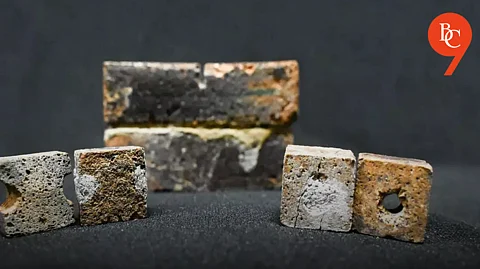

Researchers at the Indian Institute of Science (IISc) have developed an innovative bacteria-based technique to repair bricks designed for lunar habitats. This cutting-edge method, which uses the bacterium Sporosarcina pasteurii, could play a crucial role in constructing and maintaining structures on the Moon's harsh surface. A sample of the bacteria is now set to be sent into space as part of India's Gaganyaan mission to study its behaviour in microgravity conditions.
The bacterium Sporosarcina pasteurii metabolizes urea and calcium, producing calcium carbonate crystals that bind soil particles together. This eco-friendly and cost-effective process can repair cracks in sintered bricks, restoring their strength and durability.
Lunar bricks face extreme conditions, including temperature fluctuations from 121°C to -133°C, solar radiation, and micrometeorite impacts. Sintered bricks, while strong, are brittle and prone to cracking. The bacterial repair method addresses this vulnerability by sealing cracks with biopolymers and calcium carbonate.
To test the bacteria's effectiveness in extraterrestrial conditions, IISc plans to send a sample aboard ISRO’s Gaganyaan mission. Researchers aim to understand how microgravity affects bacterial activity and carbonate production.
This enables astronauts to use locally available lunar regolith (soil) for construction, reducing reliance on Earth-supplied materials. It supports NASA's Artemis program and other initiatives focused on permanent lunar settlements. IISc researchers have also extended this technique to Martian soil simulants, overcoming challenges like high iron toxicity by adding nickel chloride.
A major question remains: how will Sporosarcina pasteurii perform in low-gravity environments? The upcoming space experiment will provide insights into its growth and efficiency beyond Earth. Researchers are exploring ways to scale up production for large-scale construction projects on both the Moon and Mars.
